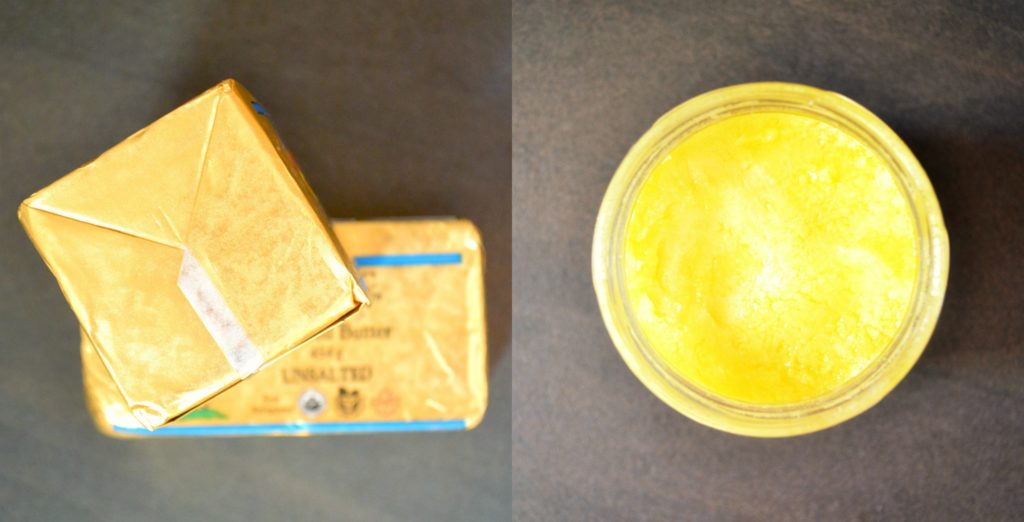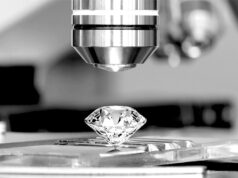Ghee, or clarified butter, is a versatile cooking fat that you can use to make a variety of delicious dishes. It has a long history of use in the Indian subcontinent, and can be made from dairy or non-dairy milk. It is mostly used today in Indian cuisine, but is also becoming increasingly popular in the West. Ghee is also a health food in that it can be used as a Vitamin D supplement and is high in essential fat, which is better for your heart and cell health.
Ghee, which is also called ghatti in Hindi, is a dairy product that is cooked and clarified butter. The butter is then heated until all the water is removed. Ghee is an ingredient in Indian cooking, and is used in a variety of savory dishes, including curries. Ghee can also be made using butter for those who are lactose intolerant. There are a variety of uses and benefits to ghee, although it may not be the best choice for everyone.
Ghee or Clarified Butter is generally accepted to be a healthier alternative to butter, but have you ever wondered exactly how butter is made? As it turns out, this is also how the majority of ghee is made, and I’ll show you how to do it in this post.
A Quick Look
Ghee is a clarified butter that is widely used in Indian and Pakistani cuisines, but many cultures have their own form of clarified butter that goes by other names. Ghee is shelf-stable, hypoallergenic, and has a high smoke point since the milk solids have been eliminated. Ghee has a creamy, buttery flavor and is light to medium yellow in hue. Darker varieties typically originate from grass-fed cows and have a greater vitamin A content. Ghee is a nutrient-dense animal fat that is high in vitamin A, vitamin E, and vitamin K.
Overview
Ghee is similar to caramelized butter nectar.
You’re probably persuaded to buy a jar of this rich, delicious, golden animal fat just based on that description.
Although many countries have their own form of clarified butter, ghee is widespread in Indian and Pakistani cuisine. Clarified butter in various forms has been utilized throughout Europe, the Middle East, Asia, and Africa for decades, if not millennia. Clarified butter is also known as ghee, boiling butter, drawn butter, butterschmaltz, smen, niter kibbeh, or daigo, depending on where you live.
Clarified butter comes in a variety of ethnic variations, each with its unique recipe or technique of production. Some are cultured, some are flavored, and yet others are made using whole milk rather than butter. The most prevalent kind of dairy is cow’s milk, although water buffalo or goat milk is also utilized in certain areas.
In general, clarified butter is produced by boiling butter until the milk solids separate from the fat, which includes milk proteins (such whey and casein) and milk sugars (like lactose). These particles are subsequently filtered out, leaving a golden liquid that is 100% butterfat and known as clarified butter, or ghee.
Ghee differs from butter in many respects because the milk particles have been removed:
- It has a long shelf life. Bacteria have little to eat since the carbohydrates and proteins have been squeezed.
- It’s free of allergens. Individuals with a dairy intolerance are usually intolerant to lactose, casein, or whey, and after filtered out, only tiny quantities of those components remain.
- It burns at a very high temperature and has a very high smoke point. Ghee is ideal for high-temperature cooking. It has a smoke point of approximately 250 degrees Celsius (482 degrees Fahrenheit), which is higher than most vegetable oils.
Ghee is used as a food, a cosmetic component, a medication, and as part of religious ceremonies in India, which is by far the world’s biggest user and producer.
Identification
Ghee is usually purchased in jars and kept at room temperature. It’s a soft, somewhat grainy, spreadable semi-solid fat that comes in a variety of colors depending on the animal and its food. Cow ghee comes in a variety of colors, ranging from light to dark golden yellow, with the darker forms originating from grass-fed cows’ vitamin A-rich diet. Ghee from water buffalo and goats is off-white.
Ghee has a buttery flavor and is quite rich. It will have a slight yogurty taste if it has been cultivated. Ghee may have a moderate or noticeable caramelized nuttiness depending on how long it was simmered.
Nutritional Information
One tablespoon of ghee (about 13g) has 112 calories, 12.7 grams of fat, and no protein, carbs, fiber, or sugar. Ghee, particularly when made from grass-fed cows, is a rich source of vitamins A, E, and K.
Ghee includes cholesterol since it is an animal fat.
Selection
Ghee is available at high-quality health food shops and Indian supermarkets.
Ghee from grass-fed cows will most likely be the most nutritious. Because producers are aware that this is a marketing point, if their ghee is made from grass-fed cows, it will state so on the label. If you care about animal products that are devoid of antibiotics and growth hormones, look for certified organic goods.
Always double-check the ingredients. Ghee should only include one ingredient: butter, unless it is cultured or flavored. Bacterial cultures may be mentioned if it is cultivated, and entire spices may be listed if it is seasoned.
Storage
Ghee is shelf-stable for one to three months after opening (or creating it yourself), but it may stay much longer depending on the brand and how it was produced. If you’re purchasing packaged ghee, be sure to read the label. If you’re producing ghee at home, take precautions and discard or refrigerate it after a month.
Ghee’s shelf life may be extended by up to 12 months when refrigerated. Ghee, on the other hand, becomes hard and difficult to distribute after it has cooled.
Preparation
Ghee may be spread on toast straight from the jar, used in baking or cooking, mixed into smoothies or warm drinks, or just consumed straight from the spoon.
Ghee is used in this recipe.

Ghee is a healthy fat that may be used wherever butter or oil would be used: stir-fries, baked products, oatmeal, roasted veggies, and so forth. It has a high smoke point and may be used in high-temperature cooking.
Ingredients
500g unsalted butter
Directions
Time to prepare: 5 minutes Time to prepare: 25 minutes 500g of butter is enough to fill a 16oz mason jar.
You’ll need the following items before you start:
-Saucepan
-Spoon
-Strainer made of wire mesh
-A cheesecloth or a piece of paper towel
-Bowl
-Funnel is a word that has a lot of different meanings (optional)
a 16-ounce mason jar
Unwrap the butter and put it in a saucepan after you’ve collected all of the aforementioned items. Cook for 10-15 minutes over medium heat, or until a thick foam develops. Allow the liquid to boil after giving it a brief swirl with the butter (reduce the heat if needed).
Continue to cook the liquid for another 10 minutes at a low heat. The foam will gradually break up over this period, and it may froth up again. You should observe solid stuff developing at the bottom of the pot as you swirl the liquid. The milk proteins that have separated from the fat are seen here. The beverage should be golden yellow in color and have a toasted, caramelized aroma.
You may now turn off the heat and arrange your equipment for straining your ghee.
Skim the extra foam off the surface of the liquid with a spoon and discard.
Place a wire mesh strainer over a bowl and line it with a layer of paper towel or a couple layers of cheesecloth.
Pour the liquid into the bowl through the lined strainer, being careful not to spill any liquid on yourself. The solid debris and leftover froth should be caught by the paper towel / cheesecloth, and there will very certainly be additional solid stuff clinging to the bottom of the saucepan. The liquid in the bowl should be golden yellow and transparent. Strain it again with new paper towel or cheesecloth if it’s frothy or speckled / cloudy with particles.
Pour your ghee into one or two clean glass jars after it has been drained. Allow it cool completely before securely sealing and storing in a cold, dry cabinet or the refrigerator. If keeping at room temperature, use within a month; if storing in the fridge, use within a year.
*If you like to make ghee in bigger quantities, this recipe may easily be doubled or quadrupled (or more!). The same technique applies regardless of the amount. If this is your first time producing ghee, start with a small batch and work your way up.
Book of Free Recipes
Every month, the Encyclopedia of Food grows as we include new delicacies and stunning food photography. Simply click this link to keep up with the latest news. Following that, we’ll give you a complimentary copy of our recipe book. We’ll also notify you when we introduce new and tasty items to the site.
For a free copy of the Encyclopedia of Food recipe book, go here.
Foods That Are Related
Ghee is a clarified butter that is cooked in India at a very low temperature (around 140 degrees Fahrenheit or 60 degrees Celsius). It is made from unsalted butter, and is very high in fat, with a high smoke point, making it an ideal cooking medium. It is widely used in Indian cooking, where it is known as ghee or ghur.. Read more about golden ghee recipe and let us know what you think.
{“@context”:”https://schema.org”,”@type”:”FAQPage”,”mainEntity”:[{“@type”:”Question”,”name”:”Is ghee more healthy than butter?”,”acceptedAnswer”:{“@type”:”Answer”,”text”:”
Ghee is a clarified butter that has been heated to the boiling point and then simmered for several hours. It is made by cooking unsalted butter at a high temperature until the water evaporates, leaving behind only milk solids.”}},{“@type”:”Question”,”name”:”What can I make with ghee?”,”acceptedAnswer”:{“@type”:”Answer”,”text”:”
Ghee is a clarified butter that has been cooked at low temperatures for a long time. It is used in Indian cooking, where it is known as clarified butter.”}},{“@type”:”Question”,”name”:”How is traditional ghee made?”,”acceptedAnswer”:{“@type”:”Answer”,”text”:”
Ghee is traditionally made by simmering milk or cream in a pot with butter. The milk or cream will cook and the butter will melt, creating a thick liquid that can be strained out of the solids.”}}]}
Frequently Asked Questions
Is ghee more healthy than butter?
Ghee is a clarified butter that has been heated to the boiling point and then simmered for several hours. It is made by cooking unsalted butter at a high temperature until the water evaporates, leaving behind only milk solids.
What can I make with ghee?
Ghee is a clarified butter that has been cooked at low temperatures for a long time. It is used in Indian cooking, where it is known as clarified butter.
How is traditional ghee made?
Ghee is traditionally made by simmering milk or cream in a pot with butter. The milk or cream will cook and the butter will melt, creating a thick liquid that can be strained out of the solids.
Related Tags
This article broadly covered the following related topics:
- ghee nutrition
- ghee nutrition facts
- ghee nutrition facts per 100g
- cow ghee nutrition facts per 100g
- desi ghee nutrition



